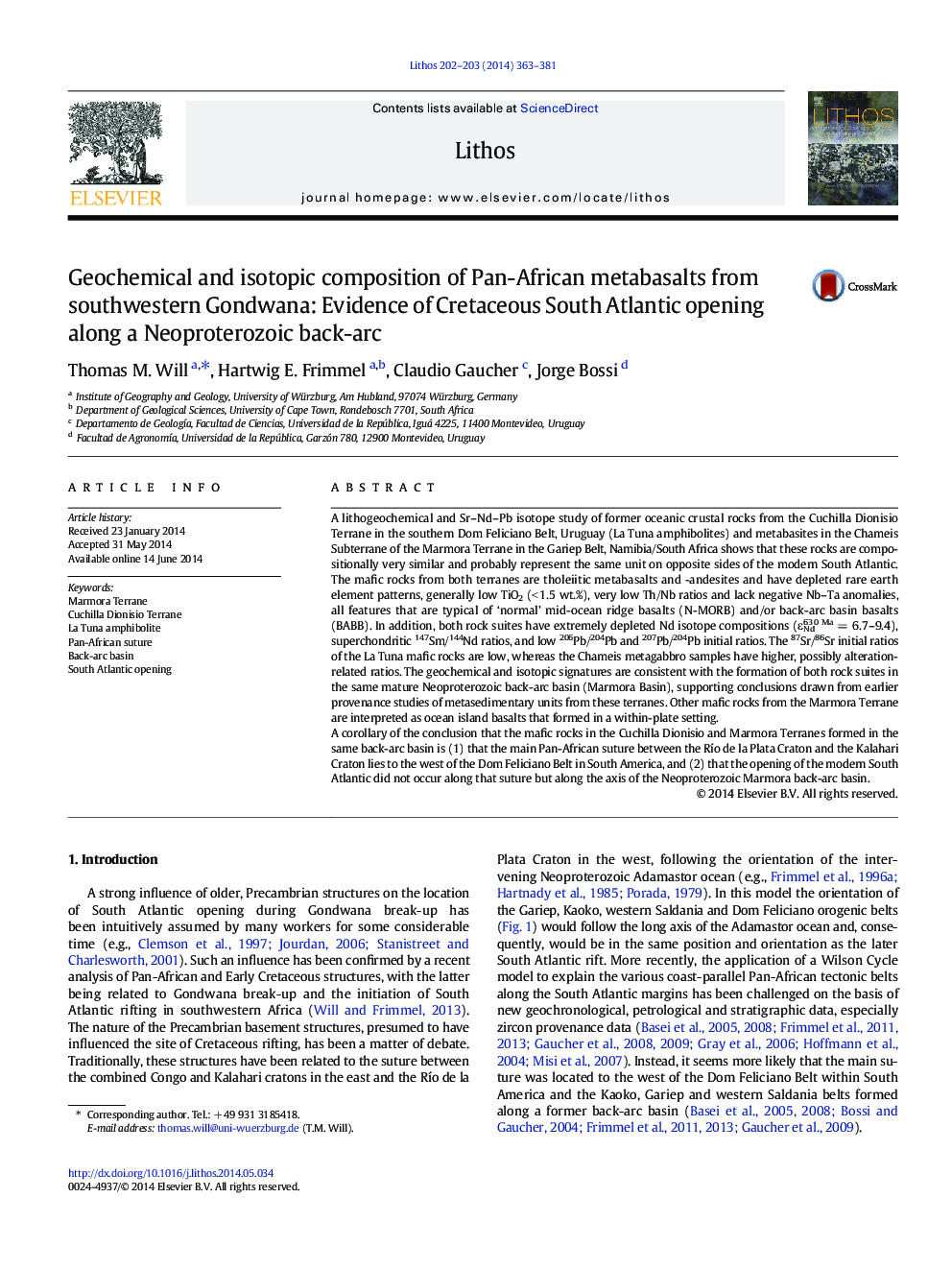| کد مقاله | کد نشریه | سال انتشار | مقاله انگلیسی | نسخه تمام متن |
|---|---|---|---|---|
| 4715890 | 1638675 | 2014 | 19 صفحه PDF | دانلود رایگان |
• Chameis metagabbros and La Tuna amphibolites are geochemically very similar.
• Formation in a mature Neoproterozoic back-arc basin (Marmora Basin).
• The main Pan-African suture in SW Gondwana is located in South America.
• The modern South Atlantic opened along the axis of the Marmora back-arc basin.
A lithogeochemical and Sr–Nd–Pb isotope study of former oceanic crustal rocks from the Cuchilla Dionisio Terrane in the southern Dom Feliciano Belt, Uruguay (La Tuna amphibolites) and metabasites in the Chameis Subterrane of the Marmora Terrane in the Gariep Belt, Namibia/South Africa shows that these rocks are compositionally very similar and probably represent the same unit on opposite sides of the modern South Atlantic. The mafic rocks from both terranes are tholeiitic metabasalts and -andesites and have depleted rare earth element patterns, generally low TiO2 (< 1.5 wt.%), very low Th/Nb ratios and lack negative Nb–Ta anomalies, all features that are typical of ‘normal’ mid-ocean ridge basalts (N-MORB) and/or back-arc basin basalts (BABB). In addition, both rock suites have extremely depleted Nd isotope compositions (εNd630 Ma = 6.7–9.4), superchondritic 147Sm/144Nd ratios, and low 206Pb/204Pb and 207Pb/204Pb initial ratios. The 87Sr/86Sr initial ratios of the La Tuna mafic rocks are low, whereas the Chameis metagabbro samples have higher, possibly alteration-related ratios. The geochemical and isotopic signatures are consistent with the formation of both rock suites in the same mature Neoproterozoic back-arc basin (Marmora Basin), supporting conclusions drawn from earlier provenance studies of metasedimentary units from these terranes. Other mafic rocks from the Marmora Terrane are interpreted as ocean island basalts that formed in a within-plate setting.A corollary of the conclusion that the mafic rocks in the Cuchilla Dionisio and Marmora Terranes formed in the same back-arc basin is (1) that the main Pan-African suture between the Río de la Plata Craton and the Kalahari Craton lies to the west of the Dom Feliciano Belt in South America, and (2) that the opening of the modern South Atlantic did not occur along that suture but along the axis of the Neoproterozoic Marmora back-arc basin.
Journal: Lithos - Volumes 202–203, August 2014, Pages 363–381
